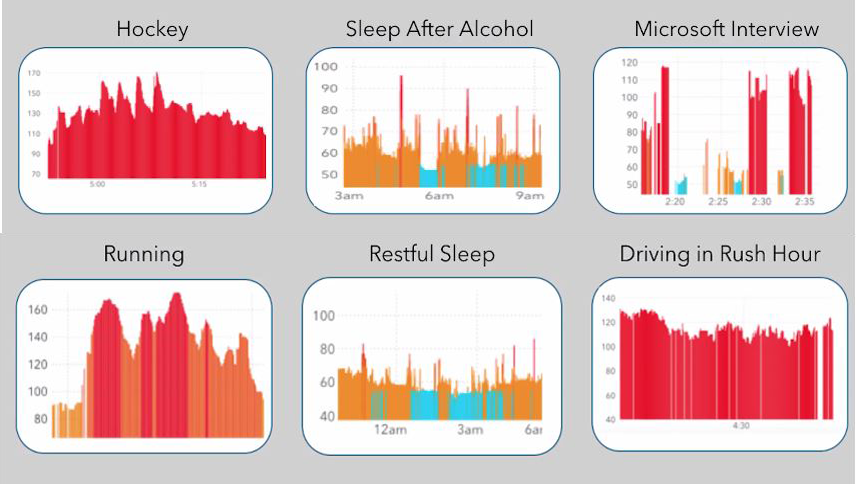Do We Need To Trust The ECG On Apple Watch 4?
On Wednesday September 12 2018 Apple CEO Jeff Williams got on stage at the Steve Jobs theater and announced that the Apple watch series four would come with a built-in ECG or electrocardiogram. giving the user the ability to see, the real-time electrical activity happening in their hearts
well sort of it’s technically a rhythm strip. but whatever, this has never been built directly into a wearable before, and it’s what scientists would call a big freaking deal. while the accuracy of the reading is for sure gonna be tested in the future, it begs the question what’s the difference between this $400 accessory, and a full fledged 12-lead ECG?
some quick background info: heart disease is the number one killer in the Western world, so there’s a need to find arrhythmias or abnormal heart rhythms to diagnose arrhythmias. a doctor will choose to use a full blown electrocardiogram usually after a life-threatening event, or when they suspect something’s wrong in the hospital.
The medical team will attach adhesive electrodes in strategic places around your chest and abdomen to get a good recording of pulses. and different pairings of electrodes produce what’s called a lead to make the industry-standard 12 lead ECG that looks like this great for use in the hospital.
But what about when patients are living their regular lives? smaller portable ECG units have been available for a while, but they’d still only be prescribed for a short period of time, and only if there’s a suspicion of finding something.
So with any portable unit you lose the detail from a full 12 lead, but what you lose in detail you gain in the continuity for your everyday wearable health tech, like the Apple watch or a Fitbit.
Newest articles:
- The Best android Tablet | The incredible Tab S4
- weird Upcoming smartphone design and specs
- Ticwatch E review | what you need to know
The big advantage is the continuous monitoring for people who might not know they have a heart condition, but while those little green light sensors on previous Apple watches can pick up the number of beats, they don’t tell you anything about the underlying electrical activity that caused it.
So to get that info without having to stick somebody up with chess electrodes, developers got the users opposite hand involved so they could complete a circuit. and the first company to do this successfully for a consumer product: was a brand called a live core, which made a watchband for the Apple watch that had an electrode built into the band.
The user wears the watch on one hand, and closes the circuit with the opposite one. the new series 4 model does this, but with the digital crown instead of a separate bands…
But when watching the Jeff Williams presentation and reading some of the articles that came out afterwards, you noticed that the common arrhythmia that they mentioned is atrial fibrillation or AFib. that’s because they have the validation of a bunch of really smart people who have been testing this in the background for a few years.
at 2018 study published in the Journal of the American Medical Association cardiology took data from almost 10,000 participants with heart rate trackers like the old Apple watch devices that only give us heart rate and time, which give us graphs that look like this.

while these patterns don’t give us a full ECG waveform, they can still give us hints as to what’s going on. atrial fibrillation looks like this on ECG On Apple Watch 4:

Lots of little waveforms that we can notice. instead, of the nice discrete waveforms of normal sinus rhythm. The study used neural networks and machine learning, to learn when it could say this pattern on the watch data usually goes with AFib on an ECG, then they took that data and applied it to 51 patients undergoing cardioversion.
A procedure that helps restore a normal electrical rhythm in the heart the study concluded that with this technology they could find AFib with about a 97% accuracy.
Knowing this, the hope is that the watch will pick up on something and then alert the user to go to the doctor, where they then get a real-deal diagnosis. and with the blessing of the American Food and Drug Administration, as well as, the president of the American Heart Association giving his personal testimony for the product, there’s a lot of trust behind these results. and Apple is actually still studying this alongside Stanford medicine, and that study is set to finish in January of 2019.
going forward it’ll still be awhile before more complex arrhythmias will be detectable, and a $400 watch isn’t gonna touch what hospital great equipment can do, but the fact that we now have a tool for screening one of the most common arrhythmias that people have, in a product that people are gonna buy, is a huge deal. <<Apple watch series 4 Latest Price>>







